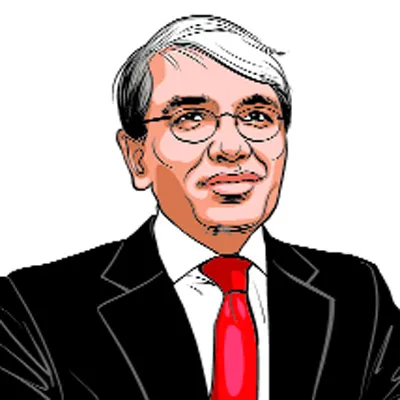Opinion Quantity leads to quality
Why engineerings regulatory model is superior to that of medicine.
Why engineerings regulatory model is superior to that of medicine.
India will produce 171 IAS officers,700 pilots,8,000 chartered accountants,3 lakh MBAs and 15 lakh engineers this year. But only 45,000 doctors. Quantity and quality can be conflicting objectives and every profession strikes a different balance. Some institutions,like the IAS,IIMs and IITs,have tight entry gates but wide open exit gates almost nobody fails to finish once they get in. The chartered accounting exam has wide open entry gates but tight exit gates more than 95 per cent who start dont pass the final exam. Yet a 33 times difference in output between medicine and engineering does not reflect demand. India is short of more than 6 lakh doctors. The huge output difference reflects two extreme regulatory thought-worlds. One artificially restricts quantity while the other doesnt. Id like to make the case that the regulatory thought-world of engineering education is superior and must be chosen over medicines because it delivers better outcomes for students,parents,employers and policymakers. Brutal competition and wide choice in industries like telecom,hotels,financial services and airlines have left Indian consumers better off,with lower prices and higher quality. Education is no different.
There are some challenges in the regulatory thought-world of engineering. India now produces more engineers and MBAs than the US and China combined. But many of them will get a poor return on their time and money in jobs paying salaries they may have got without the degree. But the huge capacity expansion after 1991 created the supply chain for Indias IT revolution. And now competition is forcing engineering colleges to re-price,improve quality or exit. Repricing has begun; capitation fees have almost vanished and annual fees are down. The race for quality is evident in rising faculty salaries and the focus on learning outcomes. Low capacity utilisation and rising real estate values are creating incentives for exits because many colleges are worth more dead than alive. The CEO of a large hospital chain recently told me that his first few hospitals were defunct hotels; next in line are defunct engineering colleges.
Medical education capacity is anaemic at the undergraduate level. Our 362 colleges offer about 45,000 undergraduate (MBBS) seats every year,when we probably need more than 1.5 lakh seats. This artificial shortage creates high pricing power; a capitation fee of Rs 1 crore is not unheard of. The post graduate (MD) capacity of 12,000 is even more bottlenecked. There is an acute shortage in super-specialties capacity,especially if you compare India with the US. Consequently,India only has 900 neurosurgeons when the US has 16,000.
It takes five years to make a doctor and the need to meet the demand for medical professionals is urgent. Existing medical colleges should be allowed to expand,with a minimum Class XII cut-off. Public sector super-specialty hospitals,which currently do not offer undergraduate courses,could easily add 2,000 more seats without much investment. Some of the 671 district hospitals could be upgraded to teaching hospitals and start undergraduate courses,as Safdarjang Hospital has done in Delhi. Private corporate hospitals with adequate facilities should be allowed to start medical colleges or offer post-graduate capacity. The IITs following the example of Kharagpur should all set up medical schools. Moving to an intake calendar of twice a year,with marginal investments,could help increase capacity. Postgraduate capacity can also be expanded by treating senior consultants as professors and allowing them to guide students in thesis work. All this expansion is bound to create worries about the balance between quantity and quality. That could be addressed in the long run by announcing a 10-year deadline,after which only those students who have completed their graduation in another subject will be allowed to apply to medical school. This will not only increase the amount of time it takes to become a doctor thereby discouraging non-serious candidates but also ensure that fresh medical graduates are the right age to make decisions about life and death.
The more difficult long-term question for India concerns higher education capacity: how many people need to go to college? Should we aspire to the 65 per cent college enrolment of Korea? Or,like Singapore,send a letter to 25 per cent of students in Class VIII,that they would not go to college but should join vocational training instead? Balancing quantity and quality in education is a wicked problem. Most regulatory regimes tend to focus on inputs (land and building) rather than outputs (learning outcomes and placements). In the input regulatory approach,micro-specifying hard assets and tightly restricting entry is the solution to quality. But this approach does not recognise that low regulatory capacity to impartially enforce standards and the continuous pressure of politics to expand higher education are here to stay. The thought-world in which quantity leads to quality has interesting outcomes; entrepreneurs in engineering education who bribed regulators to expand capacity put themselves out of business while entrepreneurs in medical education who bribed regulators to block capacity dont have students but hostages paying a ransom. As India sets up a new higher education regulator,policy must choose the engineering model.
The author is chairman,Teamlease Services express@expressindia.com





